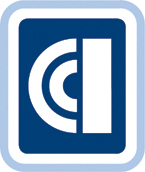Renewable Diesel

found to reduce 2x more CO2 than BEVs
Is there still a viable option for internal combustion diesel engines? The answer is a resounding yes according to a recent report by the American Transportation Research Institute (ATRI).
In May 2022, the ATRI compared the life-cycle carbon dioxide (CO2) emissions of petroleum diesel fueled trucks to alternative fueled trucks. Their findings included a potential 30% decrease in life-cycle CO2 per truck through the use of battery electric vehicle (BEV) trucks and a 67.3% decrease through the use of renewable diesel (RD) in existing Class 8 trucks.
RD is a fuel that is produced to be “chemically identical” to petroleum diesel; thus, RD can be mixed with petroleum diesel in any amount or used as a standalone, drop-in fuel in a traditional diesel truck without consequences.
A second ATRI study, published in December 2022, looked at the technical and electric infrastructure-related challenges of shifting to BEV trucks. That report identified substantial barriers to implementation including:
• Insufficient electricity generation, transmission and distribution in the U.S.;
• The need for a widely accessible truck charging network; and
• Complications related to the mining and processing of battery materials
Now, the ATRI has taken a more robust look at the factors and benefits of using RD as an alternative to BEV in its research titled Renewable Diesel – A Catalyst for Decarbonization.
Renewable Diesel is a biofuel (not fossil) and represents an alternative and/or supplement to petroleum diesel. Biofuels are made from plant- and animal-based products and waste streams that are converted into a usable fuel. Biofuels are considered renewable since they are derived from organic material that can be grown – such as soybean, corn oil and even algae which would help to satisfy those that fear competition with food sourcing.
In the U.S., California leads the push for zero-emission vehicles. In its current long-term regulatory focus for heavy-duty trucks, zero “tailpipe” emissions not necessarily lifecycle emissions is highlighted. This essentially limits the trucking industry to a few options. All the while, an increasing number of zero-emission vehicles (ZEV) are required to be brought to the new truck market until a no new internal combustion mandate in 2036 for class 4-8 trucks.
So what can be done? Well, let’s take a look at the European Union’s (EU) example, the EU provides member states a choice of decarbonization options. The Council of the EU has stated that “while the strengthened CO2 reduction targets will accelerate the uptake of ZEVs, a significant part of the stock of heavy-duty vehicles on the roads will remain internal combustion engine vehicles”. Recognizing ZEV challenges, the EU chose to raise the overall renewable energy consumption to 42.5% by 2030 across all sectors instead of a mandate for ZEVs.
The bottom line is that while we have a serious emissions problem we also need to keep freight moving. RD use decreases CO2 emissions significantly when compared to petroleum diesel. However, an across the board ZEV trucks mandate would result in higher overall CO2 emissions compared to policies and programs to increase the production and use of RD.
Considering that BEVs produce substantially more CO2 emissions over their life-cycle than do internal combustion RD, why isn’t there a bigger effort towards renewable fuels to supplement ZEVs? Shouldn’t all CO2 emissions be considered – not just at the tailpipe?






